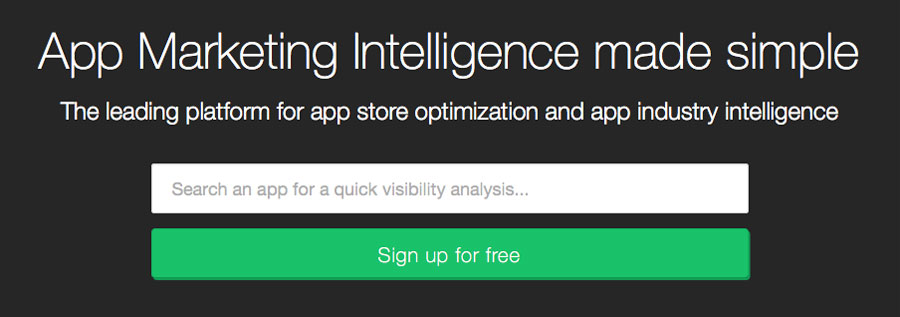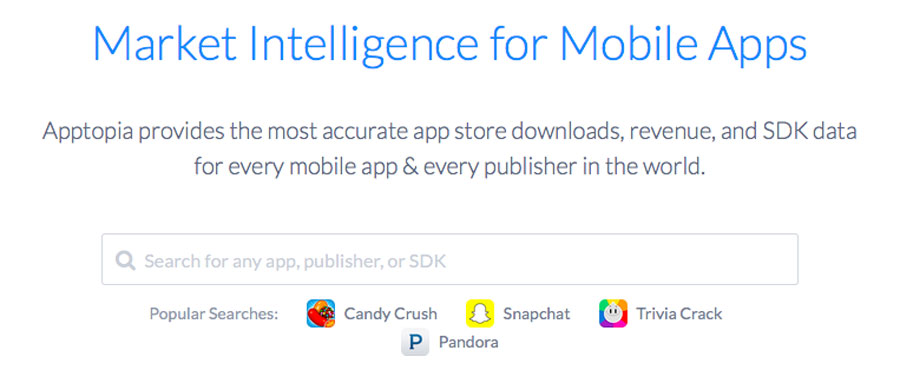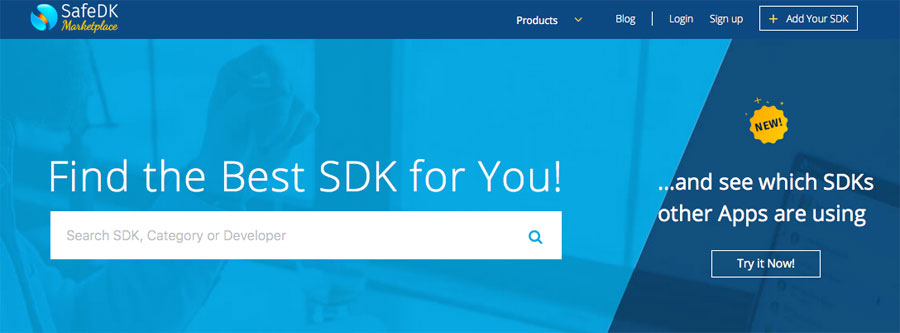‘Out of the Box’ Competitive Analysis: Supercharging App Marketing Results
Mobile App Growth
June 15, 2016

This is a guest post from Einav Laviv at Appgo2market.
In recent years I’ve been deeply involved with strategic marketing, startup marketing and mobile app marketing. The knowledge I have gathered over time has helped me develop my own growth hacking tactics.
In this post, I want to share some of this accumulated wisdom.
Being a mobile app marketer provided me with the opportunity to gain valuable insights on what’s working and what’s not. I realized that there is knowledge and then there’s KNOWLEDGE. Working with brilliant mobile app professionals opened the door for me to learn the insider’s tactics used by top app marketers.
Some of these tactics have been written about before, but those articles barely scratch the surface of what the processes actually entail.
Most of us professional marketers know quite a lot about ASO, paid acquisition and the different ways they manifest in iOS and Android. We’ve all heard about the amazing story of Yo, the benchmarks of Clash of Clans and the Cinderella story of Airbnb.
We even learned about the emergence of the mobile app marketing automation discipline. You can probably name the most important tools for app analytics, attribution, and retention in your sleep.
You get my point…we know things.
But when I’m faced with a new challenge, I end up learning a new tactic and I get excited about it. This makes me want to share it with colleagues, people who really get it and can share in the excitement.
Hopefully this gets you excited too.
Looking Under the Hood – Competitive Analysis

One of the most interesting app companies I’ve been fortunate to work with (and still am) is the drupe Android app. I am sharing this with you as I will use my drupe marketing experience to demonstrate some of the tactics and tools covered here.
I recently built an annual strategic marketing plan for drupe. I was asked to meet specific, aggressive KPIs (Key Performance Indicators) and I was given a budget.
It was up to me to fill in the blanks.
Of course, I knew the tactics I was going to use. But I had no idea which markets to focus on, how aggressive I should get with paid acquisition, the results I could expect and what’s the optimal mix that would bring me the best results.
I figured that I should track the processes of related or even similar apps, and use them to build an aggressive but feasible plan.
My Initial Strategy
Analyze the top performing apps that are similar to us (in the Productivity category) or successful apps that are “in the neighborhood.”
Then by uncovering their budget, marketing tactics, tools they are using, growth rates in any given geo (geographic area), I should be able to optimize our strategy.
It would also be much easier for me to manage my expectations with regards to our resources, seniority in the market, budget, and whether or not there’s a chance we can reach their stature in a given time period (or even exceed it).
Hunting Down Information

I focused on about 15 apps. Those that were top performers (e.g., first on the search results list, reached the largest install base, were tagged by Google as top developers or Editor’s Choice, etc.).
For each app I tried to find the following info:
Initial Launch Date
Seniority level is a critical indicator when trying to estimate achievements. The numbers an app presents are judged in relation to many parameters, one of which is how long it’s been around.
Money Raised
Quite simply, what’s their budget?
Current Rating and Number of Reviews
Reviews are a good indicator of quality. The more reviews an app gets, especially positive ones, the higher the app’s quality is.
We also identified a correlation between the number of reviews and the actual installs number and consequently between the numbers of daily reviews and the number of new daily installs.
Nothing is 100% valid of course, but it did provide a strong indication, one that I desperately needed.
Number of Unique Apps Owned by the Publisher
It was clear to me that more apps meant more sources for installs. When you estimate other apps achievements, and try to figure out what are your odds are in reaching their level, you must have a good idea of other apps’ additional, supportive assets.
Platforms They are Active on (Android, iOS or Both?)
If your app works on both operating systems, you may have an advantage over apps that don’t.
Why?
Think of the viral effect… if your app is great, people will share it with their friends.
If you support only one OS, it means that a significant portion of the market can’t join, even if they want to. Your chances of maximizing your potential with one OS are lower.
Also, different markets are dominated by different OSs.
When you look at the focus geos of a competitive app, consider their supported OSs. If your app is focused on a single OS, it could still be an opportunity, depends on how you leverage it.
Monetization
If there is some form of monetization, that means that the app has probably reached a certain level of maturity. It can also mean that the strategy isn’t only built for growth but is most likely built for growth under positive ROI (which can mean lower growth rates).
You should be aware of this when examining your competitors’ strategy.
Daily Install Range / Total Install Range
This is one of the first things you should look at.
Daily / Monthly Install Level, Per Geographic Area
I could figure out the geos to focus on if I knew where other related apps are focusing, and maybe find a trend.
Geos mean a lot!
Every app should check its analytics and focus on markets with better retention rates. Keep in mind that the app’s ability to monetize or to be acquired for a great price is highly related to its user base, including the origin of users.
Ranking well in key geos and killing it for the most popular keywords can mean tons for organic installs coming from users searching for those keywords. If that’s something you’re after, you should analyze other similar apps, so you can estimate their effort in this area.
For example, if app X is the first to show up in a keyword search, and you know that it enjoys X daily installs and Y reviews, and the publisher also has Z related apps published in the store, and it has a “top developer” badge, you can have a good idea of what it takes to get ahead of them and conquer the #1 rank.
From there, I created a spreadsheet that had the following columns:
- App Name
- Money Raised
- Initial Launch Date
- Months in operation
- # of Apps by Publisher
- Operating Systems
- # of Reviews
- Monetization
- Average Daily Installs
- Total Google Play Installs
- Installs in the Last Month
- Main Keyword Rank in Key Geographic Area
- Monthly Installs in Geo #1
- Monthly Installs in Geo #2
- Monthly Installs in Geo #3
- Monthly Installs in Geo #4
- Monthly Installs in Geo #5
- Marketing Tools They are Using
Getting Some Answers
Now, in the mobile app industry you can find many tools that can help you gain important insights on similar or competitive apps. However, since it seems like new ones are popping up every day, it’s extremely difficult to decide which specific tools to use.
Also, some tools are VERY expensive, in fact, way too expensive for an early stage startup company.
That led me to look for quality, but affordable alternatives. Some are well-known and commonly used by many app professionals, while others are relatively new and I consider them best-kept secrets:
App Annie

I used App Annie (the free option) to find the initial launch date, as well as ASO indicators such as keywords and rank in a given territories (not all territories were available)
Sensor Tower

I used Sensor Tower when App Annie failed to reveal the apps’ rank in some of the territories I researched. I could have gotten by with the free version but I didn’t mind purchasing a one month license to make the process easier.
Google Play
I used Google Play to research how many apps the publisher owns as well as the number of reviews and rating. I tracked how many additional reviews were added to determine the number of new daily reviews.
Apptopia

I was super happy to find this tool, though I don’t know how validated the data is. I’m not sure how they obtain this information, but they offer the number of monthly installs (past month) including how the main geos are divided.
I was thrilled! I used their free trial, which lets you research 10 apps.
X-Ray by SafeDK

A brilliant and free tool that lets you search an app by its name and reveal the SDKs it uses. It help me gain insights regarding the tools that competitive apps are using for analytics, attribution, acquisition, who they are using for monetization, etc.
It’s true that I could only get insights around SDK based tools they were using, but it was more than enough for me.
Web Search
Finally, I did a simple Google search to research fundraising, so I could properly estimate the resources and budget of my competitors.
The Results

This ‘out of the box’ competitive analysis helped me gain some crucial insights.
Geographic Trends
I could see geo trends for similar apps. I learned about potential markets that can be interesting for us, as the apps we looked at had users in these markets.
For example, I realized that India is a main market for Android productivity apps, launchers and contacts apps. I had also decided to further investigate specific European countries that were initially in my target geos but for some reason, were not among the main countries in other similar apps.
It’s not that I instantly decided to eliminate those countries, on the contrary, I may have managed to found a piece of “Blue Ocean” but I had to further investigate.
Reasonable Goals
I fine-tuned my plan so the goals were feasible. I looked at competing apps that had a much bigger user base than us , and I paid attention also to apps that might ‘eat our dust’ when our marketing plan would be executed and completed, based on real growth rates data.
I shared the data with drupe management team, and it was much easier to understand where we are headed, and not just shoot in the dark, based on nothing more than vague estimations. We could even fine tune our product roadmap plans, being able to forecast key future markets (geos that were common in all other similar apps)
Tool Spying
I realized that top apps were consistently using the same tools (SDKs) for marketing and monetization.
This made me take a closer look at these tools and determine if we should implement them as well. I actually learned about a new, very interesting, marketing automation SDK that I didn’t know of before.
Conclusion
This competitive analysis started out as a necessity and not a strategic decision. I built a detailed marketing plan, filled in both strategy and tactics, and felt that I needed some hands on evidence, some real data that will back me up in my planning so that I can present concrete info to drupe management team.
I am familiar with many tools that can help me gain some insights. But I went on a hunting expedition to find more ways to get deep insights, on a very limited budget.
It took me a while, a lot of digging and some lunches with top app marketers I know.
It was fun.
…and worth it. The outcome made my life so much easier and I learned a lot.
Hope you benefit from my experience. I’m happy to hear your thoughts!
Disclaimer: The writer is professionally involved with some of the brands mentioned in the article.
 About the Author
About the Author
Einav Laviv is a mobile app marketing expert and a Co-Founder at Appgo2market and at G2Mteam.
- Engage, Retain, Earn: Growth Strategy for Game Apps [Based on Data] - 15 September 2022
- How to do App Store Optimization step-by-step: a full cycle of ASO in the App Store and Google Play - 9 August 2022
- The Importance of A/B Testing - 13 January 2022

